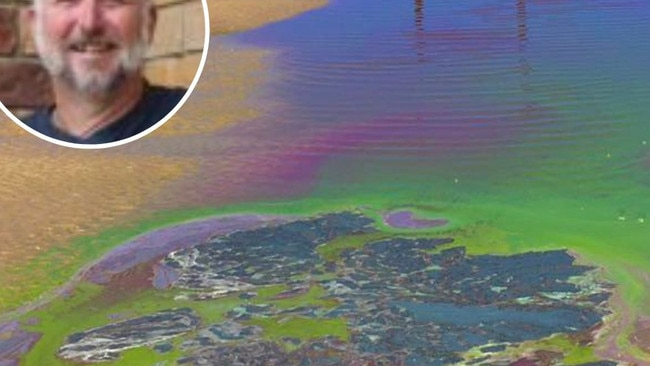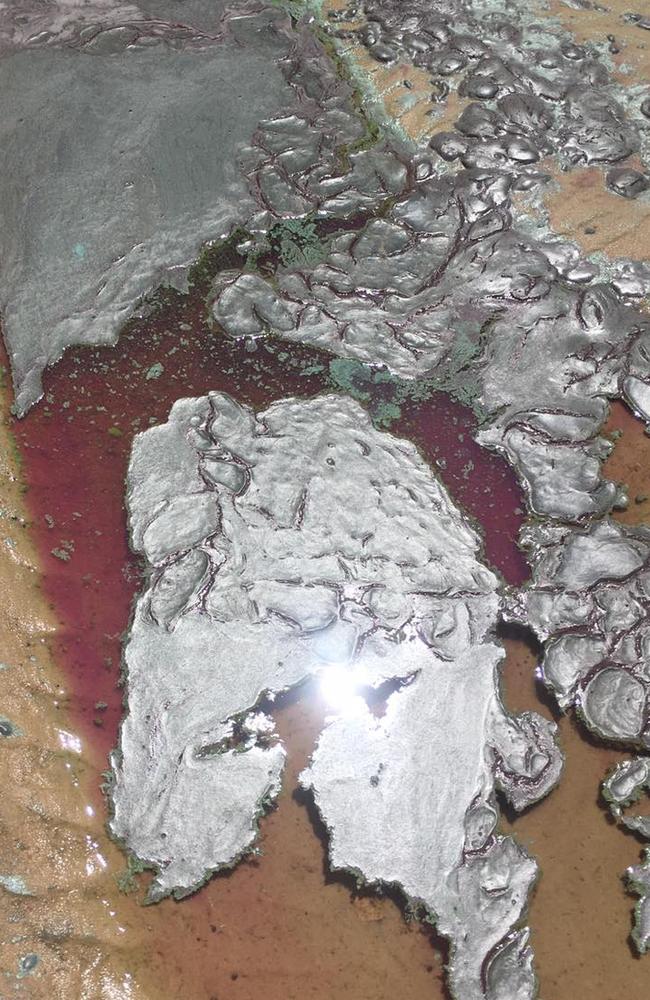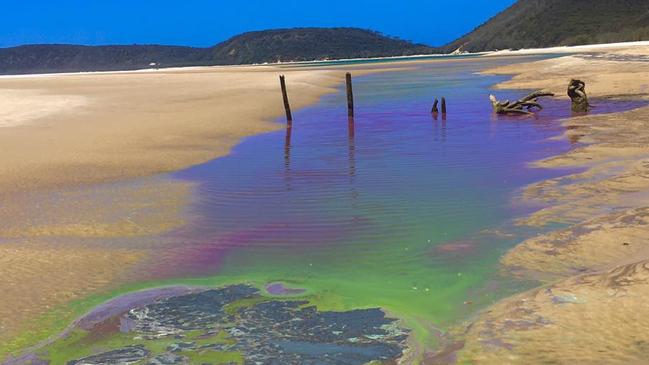Algae and bacteria build-up turns Double Island water green
Authorities have revealed the cause of a gross and putrid change in the water the Double Island Point lagoon, and what it means for the beach-loving public as we head into the weekend and summer.

Gympie
Don't miss out on the headlines from Gympie. Followed categories will be added to My News.
Authorities say stagnating water is the reason the popular lagoon at Double Island Point has turned a sickening and foul-smelling green in what appears to be a new outbreak of “sea scum”.
Photos of the coloured water were shared on social media on Wednesday night by local identity The Ice Man, whose trucks service campers and visitors up and down the Cooloola Coast beaches.
The photos were accompanied by the question “anybody know what this is”, prompting dozens of comments which suggested an algae bloom as the culprit.
A Department of Environment spokesman said Thursday this was the case.
“The water in this small lagoon area … doesn’t always get flushed by tidal movement and can become stagnant,” he said.
“This can lead to a build-up of algae and/or bacteria.”

Inside plans for new shopping centre at Rainbow Beach
He said this area had experienced outbreaks of Trichodesmium recently, “particularly in the bottom of the lagoon area on the northern side of Double Island Point”.
Close call as car buried by Rainbow Beach landslide
Parks and Wildlife staff would monitor the lagoon “to see what, if any, further action might be required,” the spokesman said.
The DES website says Trichodesmium spp “looks like an oil or paint spill” and often occurs between August and December.

“This algae is generally not harmful but can look unsightly and produce a putrid ‘fishy’ odour,” the DES website says.
Other, more pronounceable, names for it are “sea sawdust” or “sea scum”.
Larger blooms can deplete oxygen levels in water and kill fish.
Any “sea scum” blooms will likely disappear “within a few days”.
“If you come in contact with a bloom it can easily be washed off with running water,” the DES advice says.
Large blooms might also need intervention from councils.
For extremely large blooms on recreational beaches and seashores the local council may commence mitigation activities.





